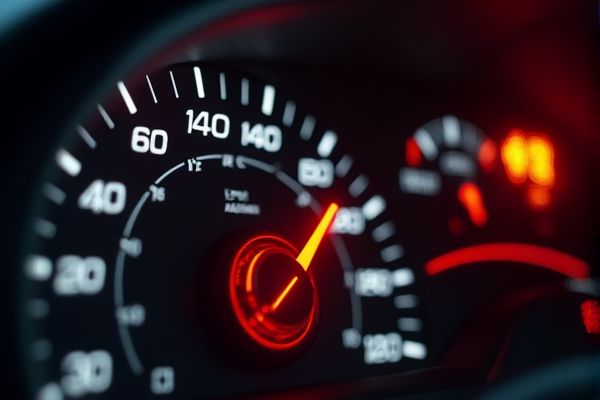
The Volkswagen Eos check engine light signifies that the onboard diagnostic system has detected a fault--often related to engine performance, emissions, or sensor issues--by generating specific error codes that help pinpoint problems such as misfires, faulty oxygen sensors, or catalytic converter concerns. Prioritizing diagnostic data from these codes is essential for a targeted repair strategy, ensuring that timely maintenance can improve engine efficiency and overall vehicle performance while preventing further damage.
Volkswagen Eos check engine light on meaning
Loose or Missing Gas Cap
A common issue causing the check engine light to illuminate due to improper sealing of the fuel system.
Faulty Spark Plugs
Can lead to engine misfires, triggering the check engine light.
Damaged Oxygen Sensor
Affects emissions control and fuel efficiency, causing the light to appear.
Vacuum Leak
Issues with vacuum hoses can lead to high RPMs and trigger the check engine light.
Mass Airflow Sensor Issues
Problems with the MAF sensor can affect engine performance and cause the light to come on.
Faulty Head Gasket
A serious issue that can lead to significant engine damage if not addressed.
Emissions Control Problems
Issues with emissions systems can trigger the check engine light.
Fuel Injection System Malfunction
Problems with fuel delivery can cause the light to illuminate.
Ignition System Faults
Issues with ignition components can lead to engine misfires and trigger the light.
Computer Output Circuit Issues
Problems with the vehicle's computer systems can cause the check engine light.
Transmission Issues
Certain transmission problems can trigger the check engine light.
Old or Weak Battery
Can cause various electrical issues, including triggering the check engine light.
Aftermarket Component Issues
Improperly installed aftermarket parts can cause electrical and performance problems.
For car users
If your Volkswagen Eos's check engine light comes on, immediately ensure your safety by driving cautiously and checking simple issues like a loose gas cap or obvious engine problems such as unusual vibrations or reduced power. Next, use an OBD-II scanner to retrieve diagnostic codes or have a trusted mechanic inspect the vehicle promptly to prevent further damage and avoid costly repairs.
Ignoring the check engine light
Ignoring the check engine light on your Volkswagen Eos can cause minor issues--like a faulty oxygen sensor or emission system malfunction--to escalate into severe engine damage, reducing fuel efficiency and potentially increasing repair costs by up to 20%. Prolonged neglect may also compromise emission controls and overall vehicle performance, leading to more expensive diagnostics, repairs, and even safety hazards over time.
How to reset?
Use an OBD-II scanner to diagnose and clear the diagnostic trouble codes (DTCs) on your Volkswagen Eos, ensuring that any underlying issues are properly addressed before resetting the check engine light. Alternatively, you can disconnect the battery for about 15 minutes to reboot the engine control module, but be aware that this method may erase preset configurations and will only mask recurring issues unless repairs have been properly completed.
When the Volkswagen Eos' check engine light comes on, diagnostic estimates typically range from about $100 for minor issues (like a loose gas cap) to over $1,000 if more significant repairs--such as sensor replacements or catalytic converter fixes--are needed. Obtaining a professional scan to retrieve fault codes is crucial for an accurate diagnosis, ensuring that repair costs reflect the exact nature of the problem.
Future prevention
Regular preventative maintenance--including timely oil changes, high-quality fuel usage, and routine diagnostic scans--helps ensure proper engine operation and minimizes the risk of triggering the Volkswagen Eos check engine light. Consistently monitoring sensor performance, exhaust emissions, and fluid levels is essential to rapidly detect and address issues before they escalate, thereby prioritizing engine longevity and optimal performance.
